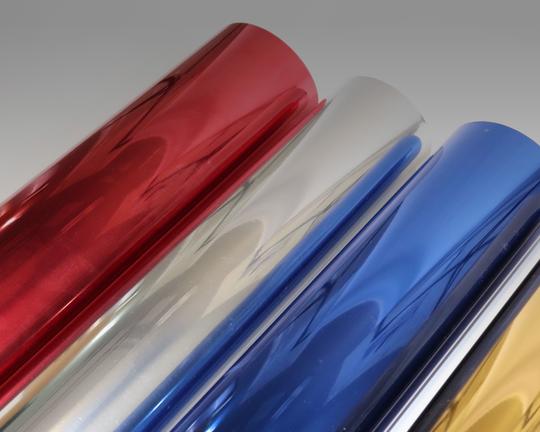Table of Contents
Personalized items have a charm of their own. Be it a t-shirt with your favourite quote or a gift bag for a friend embellished with a floral design. . Heat transfer vinyl is a popular way to personalize items for yourself and your family and friends. With a range of colours, shades, vinyl types available, you will be spoilt for design choices.
Did you know textile is the dominant industry holding a significant share in the global heat transfer films market? The global market for the dry printing process is expected to reach $3,609.6 million by 2027.
What is Heat Transfer Vinyl (HTV)?
Heat transfer vinyl is a type of specialty vinyl polymer used to transfer designs onto several materials, most commonly fabric. They are available in the market in the form of sheets or rolls. You can find them in different varieties like:
- Solid Colors Vinyl
- Metallic Vinyl
- Glitter Vinyl
- PUFF/Fluff Vinyl
The vinyl comes with a plastic sheet carrier at the front and an adhesive backing. When transferring the design to the material of your choice, you will be cutting the design on the adhesive backing ends. One of the most cost-effective ways of customizing your apparel is to use custom vinyl printing.
How Does HTV Work?
HTV works best with simple designs and quotes with minimal colors. If you are using multiple colors, remember, each will have to be individually cut, weeded, and applied to the material, for example, fabric.
In the last few years, t-shirt manufacturers and vendors are paying close attention to what customers want. One particular style that is slowly rising in demand and popularity are holographic designs on tees. This is why if you are running a t-shirt printing business, you need to make sure that you are using holographic vinyl for your customers.
Let us look at the different steps involved in HTV.
- Create a design mockup using graphic design software on your computer. Consider the scale of the design when preparing the design cut file.
- Once you are happy with the outcome of the design, remember you need to flip the design horizontally. You need a mirror image of the original design as it will be applied to the adhesive backing of the HTV. It’s the sticky end that gets transferred onto your underlying material. The plastic sheet holds together your design until the transfer.
- Transfer the final mirrored image onto the HTV. Depending on your preference and resources available, you can do this manually or use a cutting machine.
- The following process is known as weeding. You remove any extra vinyl present between your design patterns. Post the removal of excess vinyl removal; you can flip the vinyl and see how your design looks from the clear plastic end.
- Pre-heat the item onto which you want to transfer the design. Place the HTV on the material, use medium to high pressure. Hold the design in place for 12 to 15 seconds at a temperature of 305° F. You can do this using an iron or a heat press, depending on your HTV usage.
- You can use a protective barrier in between to avoid any warping of the design. For example, when transferring a design to a t-shirt, you could use parchment paper or thin cotton fabric between the iron and the t-shirt.
- In the case of cold peel vinyl, you need to wait until both the product and transfer have cooled down before you can peel the plastic sheet over the design. Once cool, peel off the sheet to reveal your personalized item.
How to Find the Right HTV?
Types of HTV
If you want to add depth to your design, you might want to explore glitter or metallic vinyl types. Look for the different types of HTV offered by the vendor apart from standard colors.
You need to make sure that the HTV will work on different types of vinyl. For example, whether you want this to work on reflective vinyl, or holographic ones, you need test out the same. This is because as a business, you might feel the need to increase your product offerings.
Stretch Vinyl
If an HTV is stretch vinyl, then the design will expand and contract when the apparel with the design is washed, ensuring minimal design cracking. Without this stretching property, your design could get ruined in the very first wash.
HTV Roll Size
Does the vendor offer HTV rolls in different sizes? Can they support small DIY projects or large-scale HTV projects? Ideally, you can buy HTV rolls in 1, 5, or 25-yard length.
Use
What are the different materials on which one can use the HTV on? If you want to customize a design onto wood or ceramic, is the HTV capable of doing so? Can the HTV be used on metal? Verify material types beforehand to avoid any damages to the product later on.
Heat transfer vinyl is a pocket-friendly way to spruce up your wardrobe or surprise your loved ones with personalized gifts. You can select from different colours and textures; the customization options are innumerable. Ensure, once the design has been transferred to apparel, you wait a minimum of 24 hours before washing. The above steps should help you complete your fun DIY project.
See Also – Clear Tarpaulin in the Next Decade
Related Search :
How to work with heat transfer printable vinyl
which fabric does heat transfer vinyl work on
what kind of fabric does heat transfer vinyl work on
how to work with heat transfer vinyl
how does heat transfer vinyl work?



